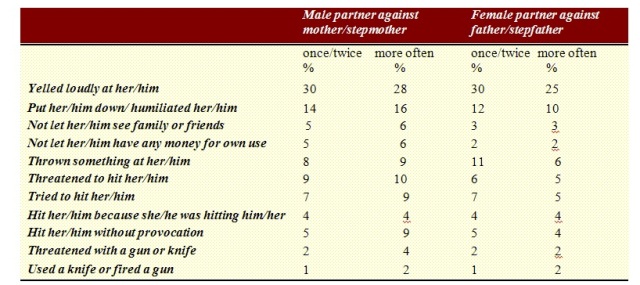Misleading claims on domestic violence in Australia
False statistics inundate our lives. They gush like a torrent from government ministries on to front pages the world over. Never, or rarely, is there enough time to check them all.
But one Australian group has checked misleading claims about domestic violence by calling on the Ombudsman to arbitrate. Men’s Health Australia won its case that the claims made by the South Australian government were misleading. Very similar claims are often made in the UK.
The South Australian government had been promoting an anti-domestic violence campaign called “Don’t Cross the Line”, very much like the UN sponsored anti-domestic violence campaigns in other Western countries. Among the claims made by the Office for Women in South Australia - which is part of the Attorney-General’s Department - was that women were far more adversely affected by domestic violence than men.
Men’s Health Australia challenged the claim, and after getting little response, appealed to the the South Australian Ombudsman, Richard Bingham, who found in its favour, concluding that the Office for Women had been guilty of unreasonable and wrong administrative action after failing to correct false and/or misleading information on the campaign website.
Among issues in dispute were the interpretation of data fron the National Crime Prevention Study, which had a sample size of 5,000. (see Table 1 below)
Table 1 Young people's awareness of parental violence

This shows very similar patterns of violence between the sexes, i.e. male violence to a female and female violence to a male. Men are, according to these figures, rather more likely to use various forms of violence against women than vice versa, but the differences are not as large as the Office for Women claimed. See this Straight Statistics article for a discussion of the issue.
Other data available consisted of individuals’ own experience of violence from a member of the other sex, see Table 2. This again fails to show huge differences: women more likely to be humiliated or physically controlled, men more likely to be slapped, bit or kicked. Men are more likely to commit acts of violence against inanimate objects (final row).
Table 2 Experience of violence

The claim made by the Office for Women was that “25 per cent of young people have witnessed physical domestic violence against their mother”. After Men’s Health Australia complained, this was changed to “A study of 5,000 Australians aged between 12 - 20 found that about one quarter (23 per cent) of the 5,000 young people reported at least one act that could be described as physical domestic violence against their mothers or stepmothers.” But it still did not refer to the acts of violence against fathers or stepfathers.
The data can be found in National Crime Prevention (2001). The actual wording is: “Nationwide, 23 per cent of young people had experienced male to female parental violence, while 22 per cent had experienced female to male parental violence.” In South Australia the corresponding figures were 22 and 20 per cent respectively.
Of the ten complaints made by Men’s Health Australia, the Ombudsman ruled that seven were substantiated, two partially substantiated, and one unsubstantiated. The Office for Women had published false and/or misleading information, had failed to correct it when it was brought to its attention, and had failed to act with reasonable diligence and speed once possible errors had been brought to its attention, he concluded. In all three respects, its behaviour had been “unreasonable and wrong administrative action.”
Greg Andresen , a spokesman for Men’s Health Australia, said: “The research evidence shows that, as far as young people are concerned, the experiences of males and females with regard to relationship violence are quite similar.
“Around a quarter of young people have seen either mum hitting dad or dad hitting mum, and it’s more likely they’ve seen their parents hitting each other than seeing one-way violence from either parent. Young males and females are also equally likely to say ‘yes’ to the statement ‘I’ve experienced domestic violence’.
Of the complains made about the OfW website, he said: “Unfortunately this is not an isolated incident. The NSW Bureau of Crime Statistics and Research recently found that the NSW Government had published eight ‘statistics’ in need of correction in their Domestic and Family Violence Discussion Paper. There appears to be a widespread culture within women’s departments that downplays or denies the existence of male victims of relationship violence and abuse.”



